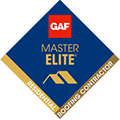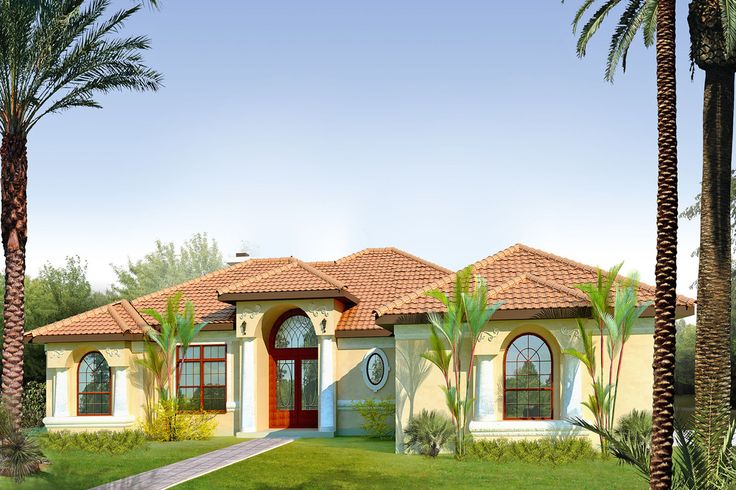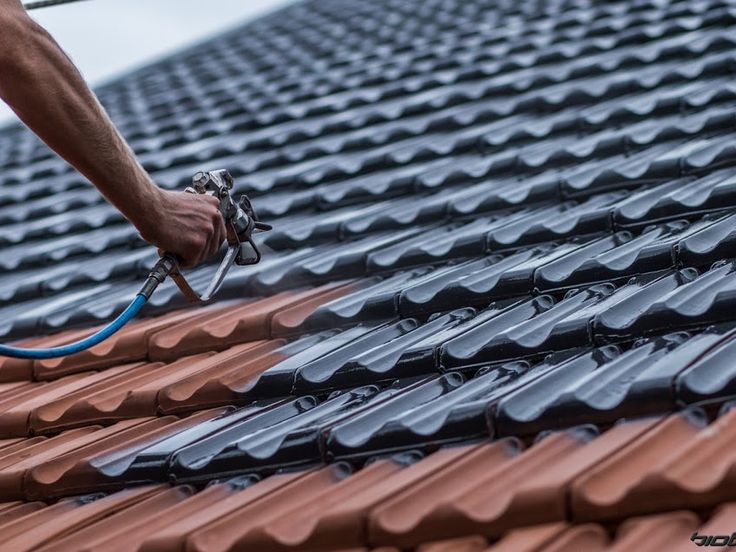Peel and stick roofing, also called self-adhering roofing or self-stick underlayment, is a modern choice for homeowners and business owners who want a fast, strong, and affordable roofing option. Unlike older methods that use screws or hot tar, peel and stick roofing has an adhesive layer that sticks directly to the roof. This makes it easier to install, less messy, and requires less work, while still offering great protection from water and bad weather.
For property owners in places with changing weather like heavy rain, snow, or extreme heat peel and stick roofing is a big help. It forms a strong, watertight seal that stops leaks and lowers the cost of maintaining the roof over time. As more people look for efficient and environmentally friendly roofing solutions, peel and stick options are becoming more popular for homes and buildings.
What is Peel and Stick Roofing?
Peel and stick roofing, also called self-adhering roofing or self-stick underlayment, is a modern roofing material that has changed the way roofs are protected from moisture and weather damage. This system has a strong adhesive layer on one side and a tough protective covering on the other. When you install it, you first remove the protective cover to expose the sticky part, which then sticks firmly to the roof surface. This creates a strong, watertight seal without needing extra glue, nails, or complicated ways to fasten it.
Compared to traditional felt underlayments or systems that use screws and other fasteners, peel and stick roofing makes a smooth, watertight barrier that stops water from getting in.
It is commonly used under shingles, metal roofing, or tile to help the roof stay dry. On flat or slightly sloped roofs, peel and stick materials can also work by themselves, giving full protection without needing other layers on top.
One big benefit of peel and stick roofing is that it helps protect the most risky parts of a roof.
Areas like valleys, edges, peaks, and places near chimneys, skylights, and roof vents are more likely to leak. By placing peel and stick membranes in these areas, homeowners and contractors can greatly lower the chances of water getting in and causing damage to the roof structure.
This material is also built to handle tough weather like heavy rain, snow, and strong winds, which is especially useful in places that get a lot of seasonal storms or hurricanes. Because it is flexible and strong, it can handle the movement of the roof caused by changes in temperature, helping it last longer and need less maintenance over time.
Benefits of Peel and Stick Roofing
Peel and stick roofing has many benefits that make it a popular option for both people who own homes and those who manage commercial buildings. Unlike older roofing methods that usually need several layers, special screws, or sticky glue, peel and stick membranes are designed to be easy to use and work really well. Here are the main reasons why this roofing type is becoming more and more favored.
Superior Waterproofing
Peel and stick roofing offers a major benefit because it provides excellent protection against water. This type of material covers the entire roof surface with a strong, continuous seal that stops even tiny amounts of water from getting through. This is very important for homes in places that often have heavy rain, snow, or storms. Regular underlayments can let water in through gaps or holes made by nails, but peel and stick membranes create a smooth, unbroken barrier that avoids this problem.
Homeowners like this extra protection because it helps prevent expensive damage to ceilings, insulation, and walls from water leaks.
In areas where ice dams form, like in colder places, peel and stick roofing is often used along the edges of the roof and in the lowest points to stop melting snowier from getting inside. This waterproofing helps give long-lasting security, so homeowners don’t have to worry about sudden repairs after bad weather.
Easy and Fast Installation
Peel and stick roofing has a big advantage because it’s easy and quick to install. Regular roofing can be tough work, often needing several layers of felt, different adhesives, and special tools to fix everything in place. This makes the process take longer and requires more skill from the workers.
With peel and stick roofing, the process is much simpler. The sticky back of the material lets roofers just take off the cover and stick the roofing material directly onto the roof. They don’t need to use nails, hot torches, or messy glue. Because of this, the whole job gets done faster, which cuts down on labor costs and keeps things less disruptive for people living in or running the building.
For people who want to save money or need the job done quickly, this makes peel and stick roofing a great choice.
It’s also a favorite among contractors when they need to fix roofs fast, like in emergencies or for quick re-roofing jobs.
Durability and Longevity
Durability is a key feature of peel and stick roofing materials. Good quality products are make to handle strong sunlight, big changes in temperature, and stress from wind or falling objects. Unlike regular felt underlayment that can break down over time, peel-and-stick membranes stay strong and don’t wear out easily for many decades.
When installed correctly by experienced roofers, these membranes can last 20 to 30 years or even longer, making them a smart choice in the long run.
They can handle the expansion and contraction from heat and cold without cracking or peeling, which means they keep protecting your roof for a long time. This helps you avoid replacing your roof often and gives you reliable protection from weather conditions every year.
Energy Efficiency
Many peel and stick roofing products have reflective surfaces that help reduce heat absorption. These surfaces reflect a lot of the sun’s rays, which keeps the inside of buildings cooler during hot weather. This makes the air conditioning system work less, which saves money on energy bills.
This feature is especially helpful for big commercial buildings or homes in sunny areas where cooling costs are high.
Choosing peel and stick roofing helps buildings use less energy and also supports a greener environment.
Versatility
Its very flexible, so it works well for many different types of roofs. It can use on flat, slightly sloped, and sloped roofs, and it goes with different roofing materials like shingles, tiles, and metal panels. This means it can be the main roofing material for flat roofs or used as a backup layer under other roofing types on sloped roofs.
This flexibility makes peel and stick membranes a popular choice in homes, businesses, and industrial buildings.
Homeowners might use it to add extra protection in areas of the roof that are more prone to leaks. Business owners might use it as the main roofing material that can handle a lot of use, like foot traffic and heavy equipment. No matter what kind of building or style it’s used on, peel and stick roofing works well and performs reliably.
Peel and Stick Roofing vs. Traditional Roofing Systems
When comparing peel and stick roofing to traditional systems like asphalt shingles or torch-down membranes, several key differences emerge:
- Installation Method: Peel and stick membranes require no torching, nails, or messy adhesives, significantly reducing installation complexity.
- Safety: Since no open flames or hot asphalt are need, this method is safer for both installers and property owners.
- Cost: While the material may be slightly more expensive than basic felt underlayment, the savings on labor and long-term maintenance make it cost-effective.
- Performance: Peel and stick membranes provide superior water resistance and are less prone to leaks, especially around roof penetrations.
Applications of Peel and Stick Roofing
Residential Roofing
Peel and stick roofing has become a popular choice for homeowners who want a dependable way to keep their roofs dry and easy to install. In homes, this material is often placed under traditional roofing materials like asphalt shingles, clay tiles, or metal panels. It acts as a defense against water getting into the roof structure, which is especially useful in areas where ice dams, strong winds, or sudden rainstorms are common.
When building a new house, peel and stick roofing helps protect the roof from the beginning, keeping the structure strong before the main roofing is added.
For when a roof is being replaced, it offers extra protection for older homes that might have damaged roof decks or existing weaknesses. Using this membrane helps prevent leaks, water stains on ceilings, and moisture issues inside the house.
Another benefit of peel and stick roofing is that it’s quiet to install. Since it doesn’t require noisy hammering or using a torch, it’s less disruptive for families living in the house during the work. Plus, its strong stickiness means it stays in place well, reducing the need for future repairs and giving homeowners confidence that their roof has a strong, long-lasting waterproof layer.
Commercial Roofing
Commercial properties, especially those with flat or low-slope roofs, get a lot of benefit from peel and stick roofing systems. These types of roofs often have problems with water pooling and get a lot of sun exposure, which can cause them to wear out faster if traditional roofing materials are use. Peel and stick membranes help by offering a continuous waterproof layer and strong protection against changes in temperature.
Commercial buildings like warehouses, shops, and offices can’t sit idle for long while work is done on their roofs. The peel and stick systems stick on their own, so contractors can finish the job faster, which means the business can get back to running smoothly sooner.
Also, these membranes can use as the main roofing layer or as a backing under other materials like single-ply membranes or metal panels. This makes them flexible for different building designs and rules, helping property managers and building owners protect their buildings better and save money in the long run.
Emergency Roof Repairs
In places where strong storms, high winds, or heavy rain are common, emergency roof fixes are often need. Peel and stick roofing is very useful in these situations because it can apply quickly and works well. When a roof gets damage storms like missing shingles, holes in the roof deck, or open seams peel and stick membranes can put on right away to cover the damaged parts.
This fast installation gives a temporary but dependable watertight seal, stopping more damage from happening inside the building while permanent repairs are being plan. Sometimes, especially on flat roofs, the membrane can even act as a long-term fix until a complete roof replacement is done.
Both contractors and home owners like using peel and stick membranes for emergencies because they don’t need special tools or a lot of setup. Even when the weather is tough, the sticky back of the membrane sticks well to the roof surface, letting for fast action in urgent situations and helping to prevent more water damage to the home.
Installation Process for Peel and Stick Roofing
The installation process involves several key steps to ensure optimal performance and longevity:
- Surface Preparation: The roof deck must be clean, dry, and free of debris or old roofing materials.
- Primer Application (if required): Some membranes may require a primer to enhance adhesion, especially on wood or concrete surfaces.
- Membrane Application: Starting from the lowest point of the roof, the backing is peeled away as the membrane is carefully rolled out and pressed into place.
- Seam Overlaps: Adjacent sheets must overlap properly to maintain waterproof integrity.
- Edge Sealing: Corners, edges, and roof penetrations are sealed to prevent moisture intrusion.
While DIY installation is possible, professional installation ensures proper application, warranty protection, and compliance with local building codes.
Maintenance and Longevity of Peel and Stick Roofing
Peel and stick roofing requires minimal maintenance compared to traditional roofing systems. However, routine inspections are recommended, especially after severe weather events. Property owners should look for:
- Lifting edges or seams
- Punctures or tears caused by debris
- Signs of pooling water on flat surfaces
With proper care, peel and stick membranes can last 20–30 years or more, providing a reliable roofing solution for decades.
Cost of Peel and Stick Roofing
The price of peel and stick roofing depends on things like how big the roof is, the quality of the materials, and how much labor costs. Usually, people pay between $1.50 and $4.00 per square foot for the materials alone, and there are extra costs if you hire someone to install it. Even though it might cost more than using simple felt underlayment at first, peel and stick roofing tends to last longer and offers better protection, which can save money over time.
Why Choose Sierra Roof Inc. for Peel and Stick Roofing?
Sierra Roof Inc. offers top-notch roofing services, including the installation of peel and stick roofing systems for homes and businesses. Our team has been in the industry for many years and knows the specific weather challenges that property owners face. We create custom solutions to give you reliable protection that lasts.
Our Services Include:
- Peel and Stick Roofing Installation: Expert installation using premium materials for superior waterproofing and durability.
- Roof Repairs and Maintenance: Comprehensive repair services to address leaks, storm damage, and wear-and-tear.
- Residential and Commercial Roofing: Customized solutions for homes, businesses, and industrial facilities.
- Emergency Roofing Services: Fast response for storm damage or urgent roofing needs.
We prioritize quality workmanship, customer satisfaction, and competitive pricing to deliver roofing solutions that stand the test of time.
Frequently Asked Questions (FAQs)
1. How long does peel and stick roofing last?
High-quality peel and stick membranes can last 20–30 years with proper installation and maintenance.
2. Can peel and stick roofing use on any roof?
It works best on flat or low-slope roofs but can also serve as underlayment for pitched roofs.
3. Is peel and stick roofing waterproof?
Yes, it creates a watertight seal that prevents leaks and moisture intrusion.
4. How much does peel and stick roofing cost?
Costs vary, but materials typically range from $1.50 to $4.00 per square foot, with labor adding to the total.
5. Do I need a professional installer?
While DIY is possible, professional installation ensures proper application, warranty protection, and code compliance.
Contact Sierra Roof Inc.
For expert peel and stick roofing services, trust Sierra Roof Inc. Our team is ready to assist with new installations, repairs, and emergency roofing needs. We proudly serve residential and commercial customers throughout the region, delivering high-quality results at competitive rates.
Contact us today to schedule a free estimate or consultation:
- Website: www.sierraroofinc.pro
- Phone: (714-635-5071)
- Email: (info@sierraroofinc.pro)







